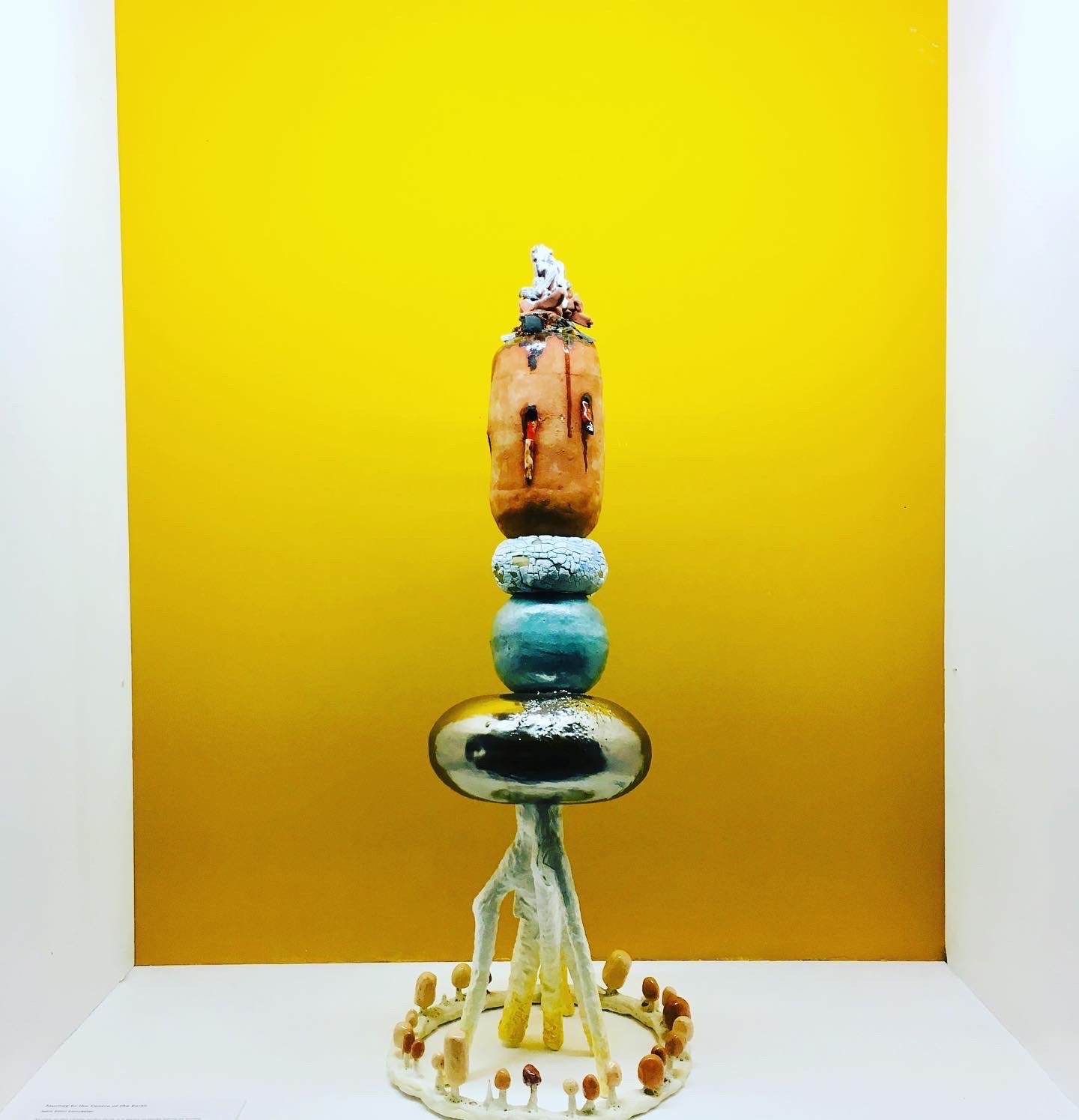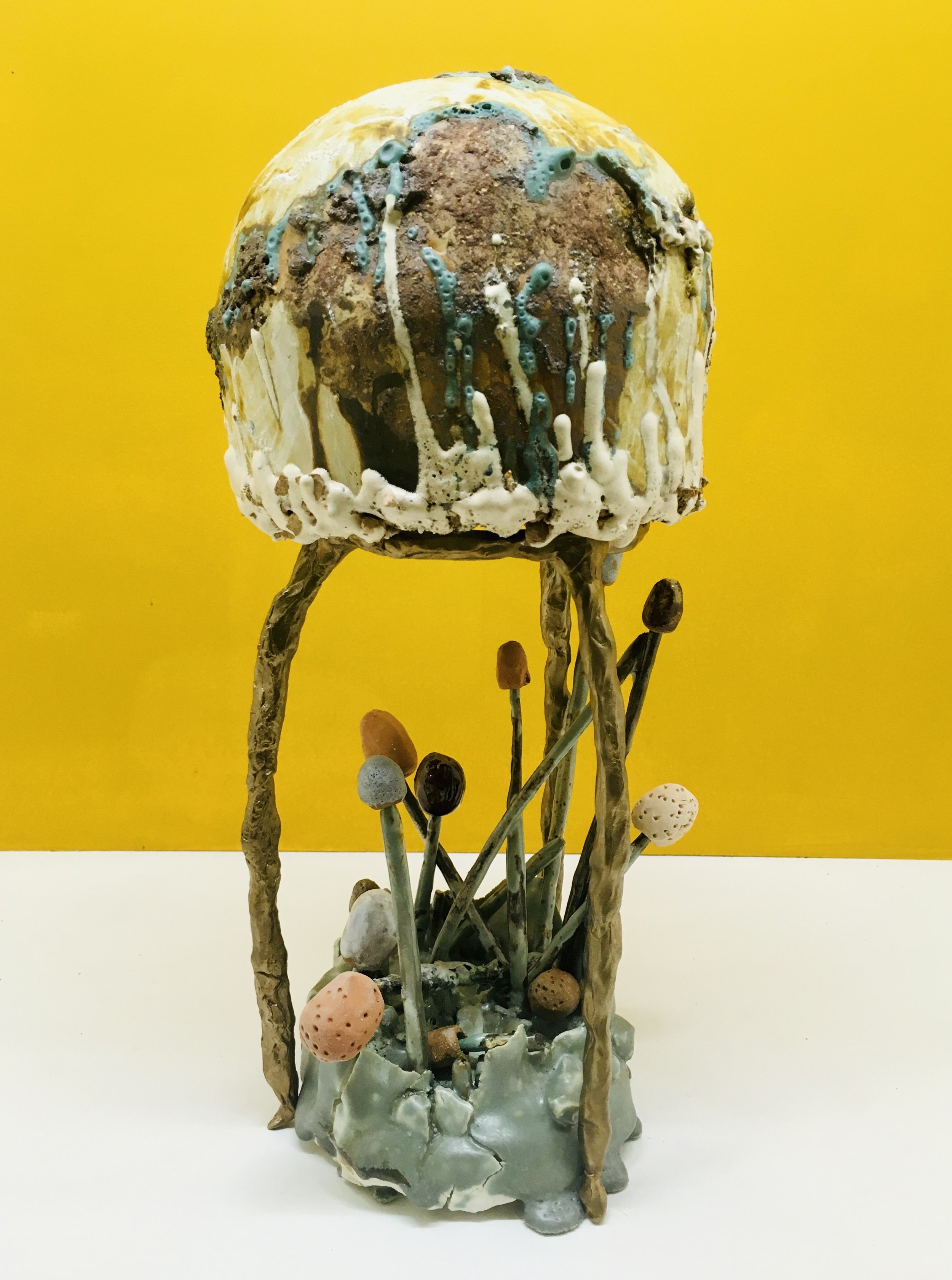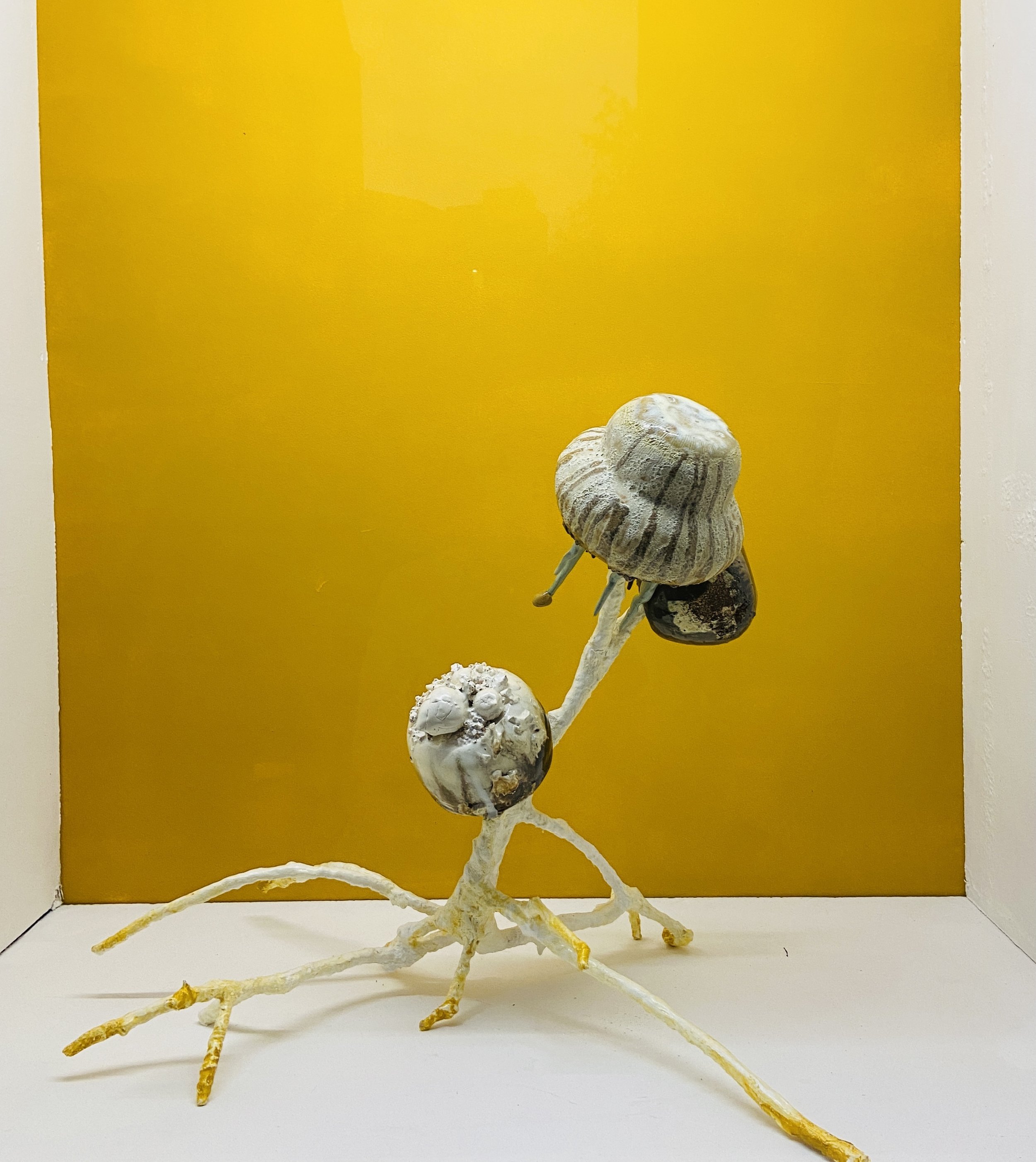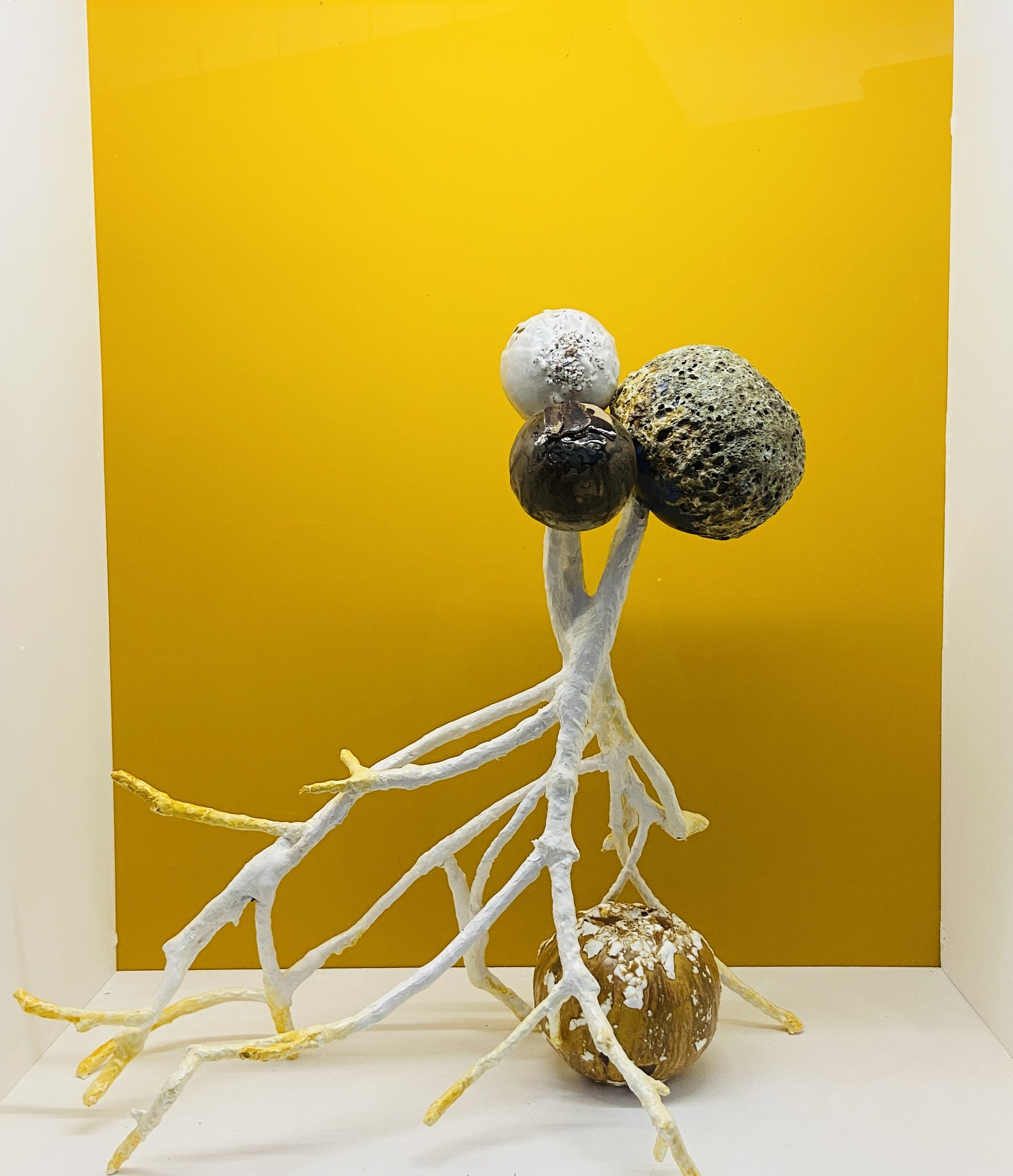



Journey to the Centre of the Earth
9th October – 20th November 2022
m2 Gallery & Pavillion, Peckham, London.
Journey to the Centre of the Earth is a series of works acting as guides for, or protagonists in, other-worldly explorations yet to be made - journeys to impossible places that defy human intrusion. Of the 6,370km distance to the centre of the earth the furthest ever drilled is around 12km, at only 8.5km the temperature of 180°C makes it unfeasible to go further. Far more so than the remote reaches of outer space, what is known of what lies far beneath us is only formed indirectly from data analysis, supposition and speculation.
Lancaster uses wild clay and rocks, some spanning millions of years of the rock cycle, excavated from across the UK and fired to extreme heat to create sculptures investigating the relationships between the landscape and the human body, as connected and interchangeable.
Over 1,300 million years ago, long before trees overtook the land some 700 million years ago, the earth was covered by giant mushrooms – like those that Jules Verne’s Professor Lindenbrock discovered in his fictional account of the centre of the earth. These represented the beginnings of the mycelium network, a threadlike vegetative fungus. Transferring the right nutrients to the right plants and existing over much of the earth it acts as a superhighway of vital information forming an interconnective tissue of the natural world.
Like the tiny differences in DNA that distinguish us from each other (only a few tiny changes in our DNA structure set us apart, giving us our variations in eye, skin, and hair color) we are equally closely related to these fungi. Lancaster’s works imagine a future in which human detritus (waste, bodies and possessions) is absorbed by this mycelium network and turned into extraordinary solidified geological formations that then return to the core earth once again.
Lancaster works with clay and ceramics to mimic and suggest scientific, geological and sociological histories. Her interests lie in the haptic experience of materials and the innate qualities that emerge in the process of working with them.
Clay brings with it the offer of pleasure in simple manipulation, in the feel of it. With the potential to overcome the inhibitions of other forms of making, and through intuitive manual actions like pinching, stretching, scrapping and smoothing, something fundamental is at work that implies a deep commonality. Lancaster’s work revels in this approach to the material and forges connections and associations to link the present to the distant past, the here to the extreme elsewhere and the ‘me’ to everything else.





